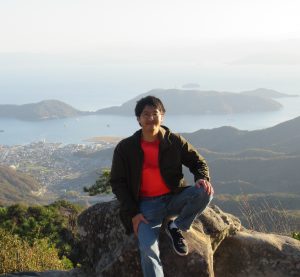100 Stories
Museum of Art: My Impressions of Hiroshima’s Impressionism
Have you ever had an impression of a place that was so good that you wanted to return, only to be asked, “you want to go there again?” I know I definitely have, but despite going to the same place, I am well aware that it is a completely different trip each subsequent time. Whenever I am astounded by a certain place, I feel the need to see it again at a different time of day or time of the year. Nature and scenery are ever-changing, so what we see differs depending on the time, season, weather, and even era! This is a basic tenet of the Impressionist movement; one can see the same thing dozens of times and each instance is exclusive to that very moment, any of which can be captured onto a canvas on site. At the same time, while no two views are the same, each has the potential to leave an impression that lasts a lifetime, and my most recent visit to the Hiroshima Museum of Art did just that.
Easy Underground Access
Those who are downtown and want a quick, quiet getaway can walk all the way through Hondori to Peace Park, but beyond that there are other tranquil locales worth checking out that area a short walk away from the Atomic Bomb Dome, The Hiroshima Museum of Art lies just north of Hondori and the Bus Center, and is a straight shot through a set of underground passageways. Just north of Orizuru Tower—which can be found east of the Atomic Bomb Dome—take the staircase in the photo to an underground parking lot entrance.
Once inside, go past the automatic doors up ahead to enter the Shareo underground shopping mall. At the end of the corridor, you should find yourself in a circular hub area where multiple paths branch out like spokes on a wheel. Hang a left to find a fork with the left staircase leading to the basement of the Sogo department store and the right staircase stretching up to street level. Take the stairs on the right to resurface next to the Bus Center, then continue north. On the left side will be the Pacela shopping mall; walk past it and cross the street to reach the Hiroshima Museum of Art.
Japan’s Answer to Modern Art
The museum holds special exhibitions throughout the year, but this time the theme was, “Treasured Japanese-style Paintings with Western Paintings.” In addition to their usual predominantly French modern art collection, they put out works by Japanese painters from the late nineteenth to the early twentieth century who were inspired by their European contemporaries and wished to pit their tradition-infused style against Western masterpieces of the time. This innovative cultural fusion is appropriately expressed by the flagpoles in front of the building proudly flying France’s Tricolore and Japan’s Hinomaru alongside the Hiroshima Museum of Art’s own banner.
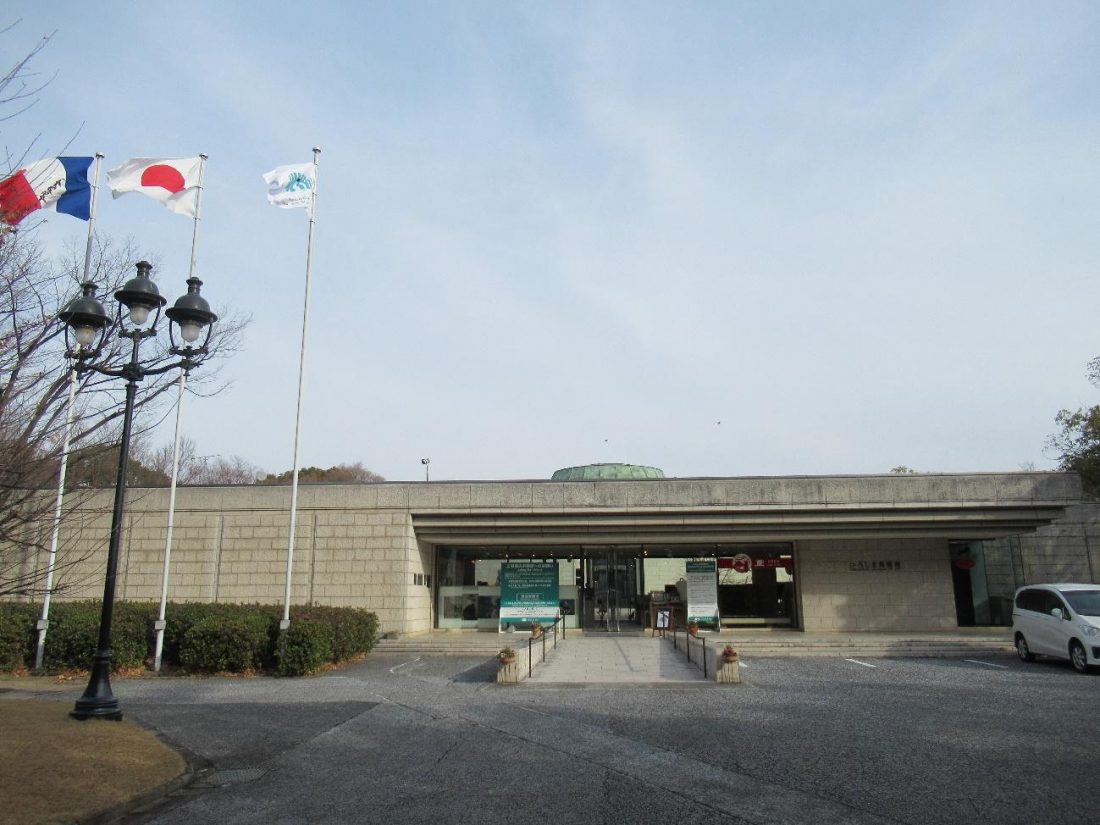
After entering and buying my ticket, I proceeded to the central courtyard, which houses a garden with statues, outdoor eating space for the museum’s Café Jardin, and a circular building where the main exhibits are kept. To my dismay, the other buildings and the remainder of the courtyard were blocked off on account of renovations, meaning I could only enjoy four out of the eight galleries that are normally open (in exchange for a reduced admission fee). Ecstatic to lay eyes on the artwork and eager to escape the numbingly frigid winter air, I made my way into the exhibit hall.
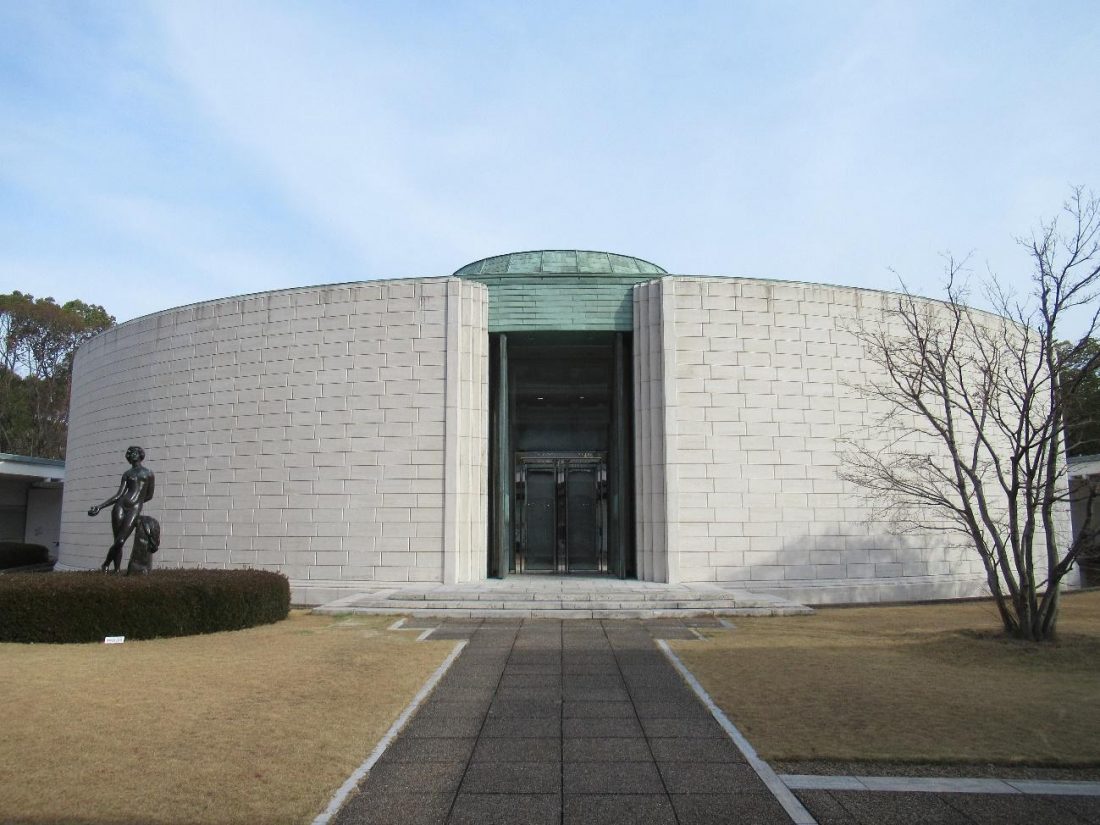
The paintings have plaques next to them detailing the name of the piece in Japanese, French, and English, as well as the materials used and the year of creation, if known. As for descriptions of the paintings themselves, the museum provides a dedicated smartphone application for reading them that utilizes the museums Wi-Fi network. The Museum Guidance App is available in Japanese and English and not only explains every single piece featured in the museum, but also provides artist biographies and lets users search for works by artist name or inputting a four-digit code assigned to the work.
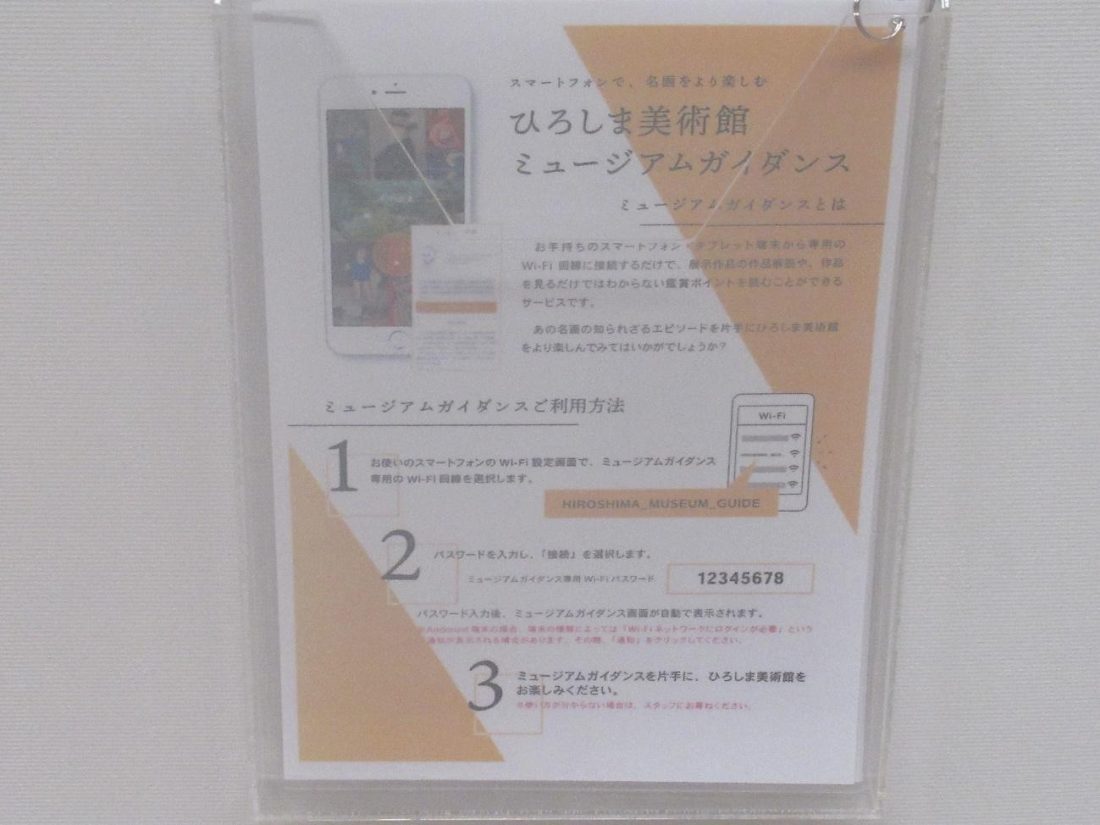
While informative, this smartphone-based virtual curator is not without its shortcomings. For starters, visitors must access it by selecting the museum’s Wi-Fi network from their smartphone Settings screen, and if they leave the Wi-Fi Network selection screen (i.e., try to simultaneously use another app on the smartphone) or the screen goes black even for an instant, the Museum Guidance App will close and must be manually accessed again by selecting it in the Wi-Fi menu. In addition, the app only seems to work inside or in close proximity to each individual gallery, which makes it a challenge to read the descriptions for the sculptures in the center main hall while looking at them.
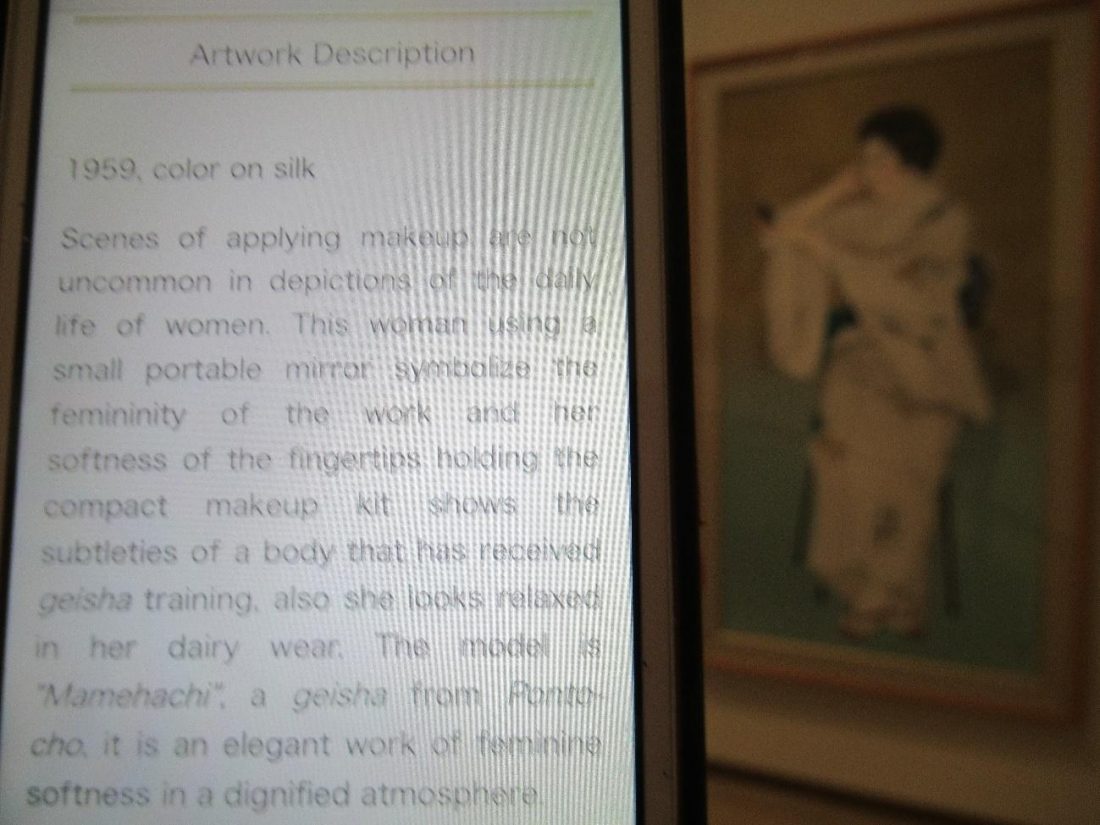
Technical frustrations aside, while I was in the app, I found that the descriptions of each artwork enriched my experience of perusing the galleries by making me re-examine the piece to focus on key points of interest, which led to my heightened appreciation for every painting or sculpture. The English grammar was certainly far from perfect, but the descriptions got the meaning across most of the time. There were only a couple of instances where I had to exit and boot up the Museum Guidance App in Japanese to double-check what was intended to be said. While I’m at it, I shouldn’t neglect to mention that some of the artwork codes didn’t function properly, and when entered, led to a description of another piece in the museum or a painting not currently on display. However, given the hours of education the app provides (and the amount of battery I used up trying to read everything), my verdict is that the Museum Guidance App is worth your time and energy trying, and I would advise gazing at each work of art with smartphone in hand.
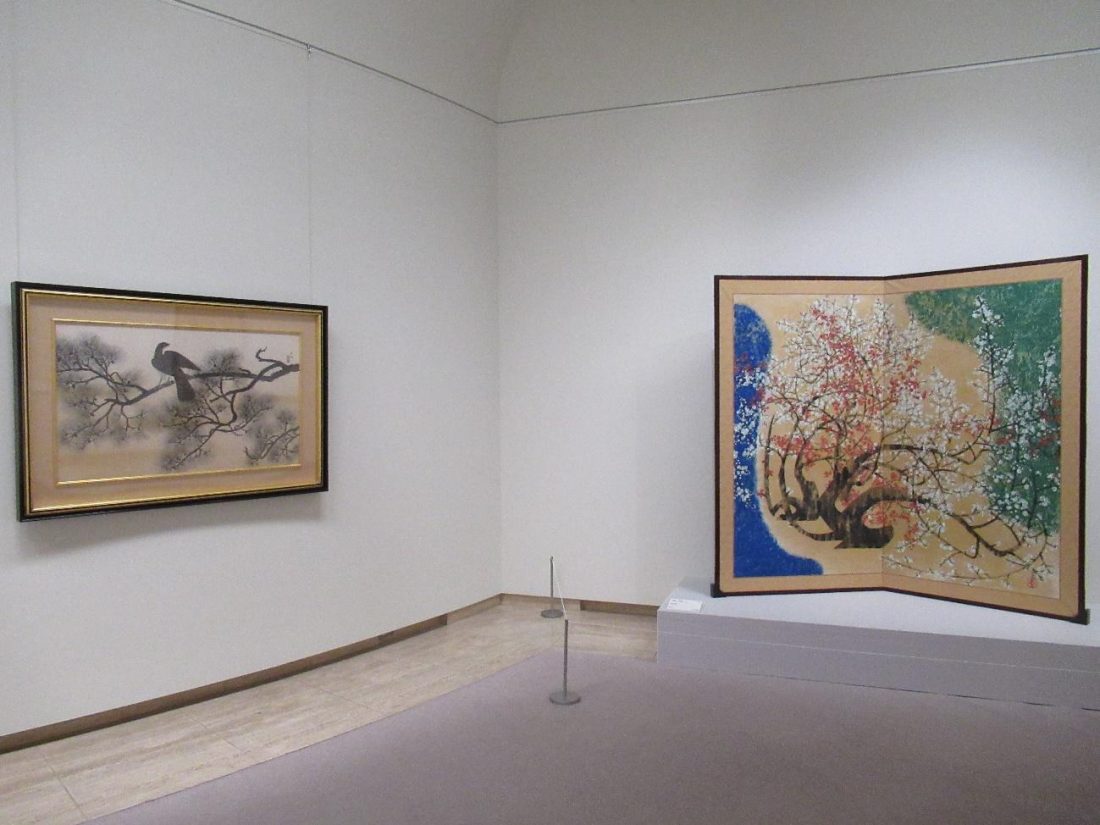
I spent the morning gazing at the galleries with Japanese paintings. Some were traditional folding screen paintings whereas others were framed like Western pieces. Every painting retained some element of traditional Japanese art style with varying degrees of a modern twist applied to its appearance. It was certainly not what I was accustomed to seeing in any Japanese castle, palace or temple, nor did it fully resemble paintings found in conventional art museums. At this time of the day the galleries were also relatively tranquil, and most of the time I had the room to myself. The only sounds to be heard came from the air conditioning system and me operating my camera.
Moment of Joy: Second Impressions Matter!
They say you don’t get a second chance to make a first impression, but at times I beg to differ. Most of the Japanese paintings I tend to see look rather two-dimensional, but some of these modern works appeared to jump out of their canvases and frames. When I entered the first gallery, the painting on the left (Dawn in the Snow by Gensou Okuda) with its blanket of frosted evergreens was the first to catch my eye, but after looking at other pieces and returning to this one, I could have sworn some of the snow I initially saw had melted as my eyes only noticed the green of the trees poking out on my second viewing. This prime example of nature’s volatility successfully documented as a single, everlasting picture is what I believe is one of the greatest joys of appreciating modern landscape paintings.
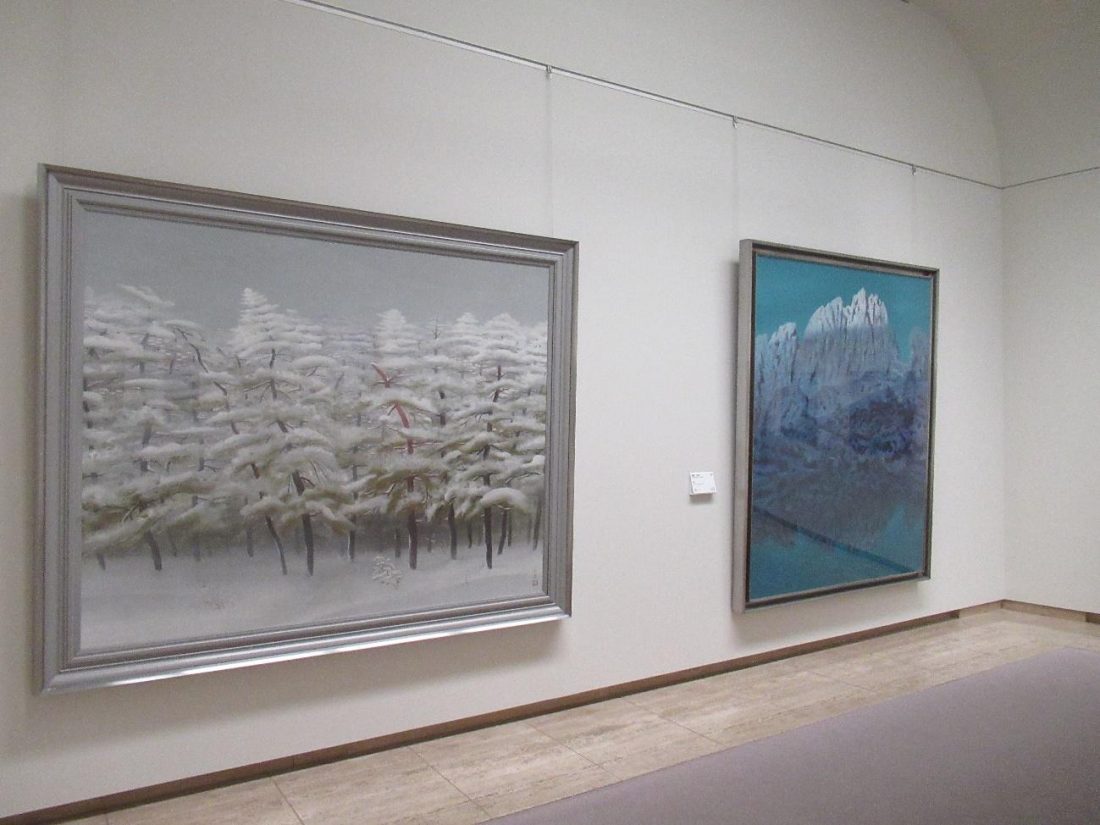
Paws-ing for Lunch
By the time I had finished viewing the Japanese paintings—which made up only half the galleries open that day—I was famished and ready for a leisurely lunch break at Café Jardin. I made a beeline for the dining area and nabbed a cozy window seat where I could refuel with a view of the courtyard acting like a bonus landscape painting. The café’s menu may be simple, but everything I saw looked rich and I had to ponder for quite some time before making my decision. The bill of fare includes sandwiches, artisanal breads, cakes, ice cream, and a wide variety of hot and cold beverages. In the end, I settled on a curry lunch set with an elderflower soda float.
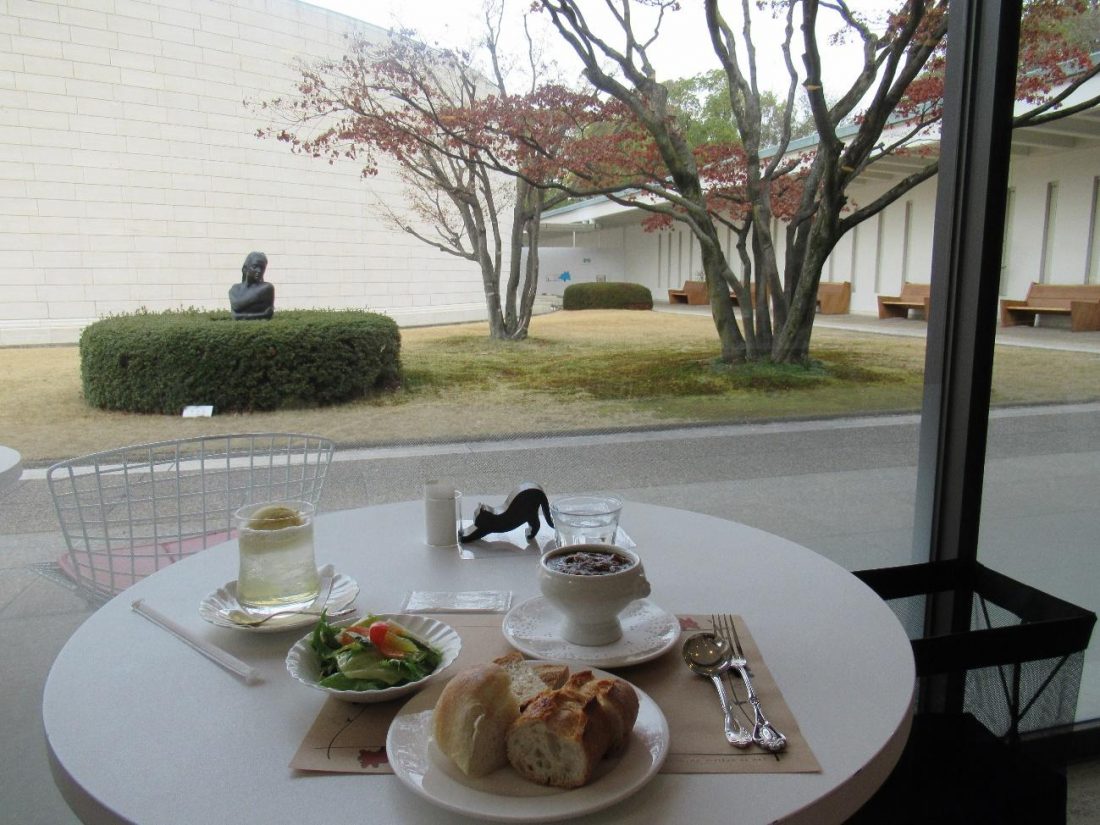
Café Jardin collaborates with Andersen, a famous bakery in Hiroshima, to provide high-quality, crispy yet tender bread in all of its meals, including mine. The curry itself is flavored with apples from Andersen Farm in the Geihoku area of Hiroshima Prefecture, and each bowl contains a generous helping of beef belly chunks that float in the spicy roux. They only sell a limited number of servings per day, however, so I counted myself lucky I was able to partake in this piping hot delicacy that helped me combat the cold outside.
Each table is decorated with a black cat that acts as a mascot of the Hiroshima Museum of Art and is featured in several souvenirs in the gift shop. Apparently, there’s a backstory that the cat jumped out of a van Gogh painting called Daubigny’s Garden (part of the main collection here) and stuck around the museum, which explains why the black cat is missing from the actual painting. In actuality, the cat was painted over, but I must admit the above story sounds a lot more appealing. Speaking of paintings though, I realized that I had paused long enough for lunch and decided to return to the art galleries.
Inspiration from Western Art
I only had a couple hours left to admire and learn from the remaining two galleries, which were filled with works by modern European painters. These include the classic Impressionists like Degas, Monet, and Renoir, as well as other well-known figures such as van Gogh, Matisse, and Picasso, who were key figures in founding subsequent artistic movements. It was works like these that inspired the Japanese painters from the first two galleries and even the Hiroshima Museum of Art itself. Some of these artists were also responsible for the statues on display in the main hall, but given the shoddy Museum Guidance App performance there, I had to read about those sculptures by the gallery entrances.
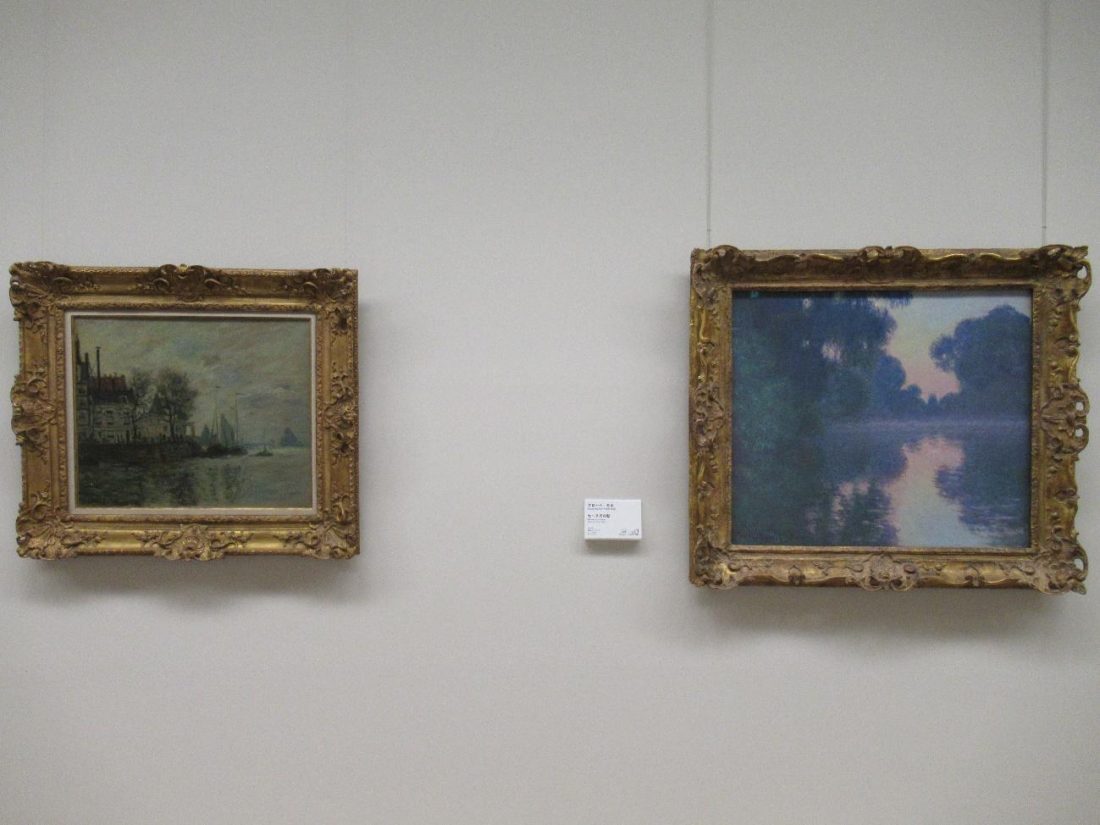
Some of the last paintings I had the pleasure of viewing that day were done by an artist named Léonard Foujita, originally a Japanese painter who studied art in France and later acquired French citizenship. A significant portion of his works was inspired by Catholicism (to which he converted in his later years), as can be seen in this set of three paintings depicting the life of Jesus Christ. Despite being an artist of the modern era and learning from his French counterparts, the two-dimensional style seen below is actually more reminiscent of Medieval artwork found in some cathedrals or even of traditional Japanese paintings on scrolls or folding screens. If I had to pick a single artist to represent the art I witnessed in this museum today, it would be this man, who not only blended European and Japanese painting styles, but went a step further by infusing himself into the French art scene and society. It was also flawless timing when I ended my visit here, as the museum was about to close and my smartphone battery was almost empty.
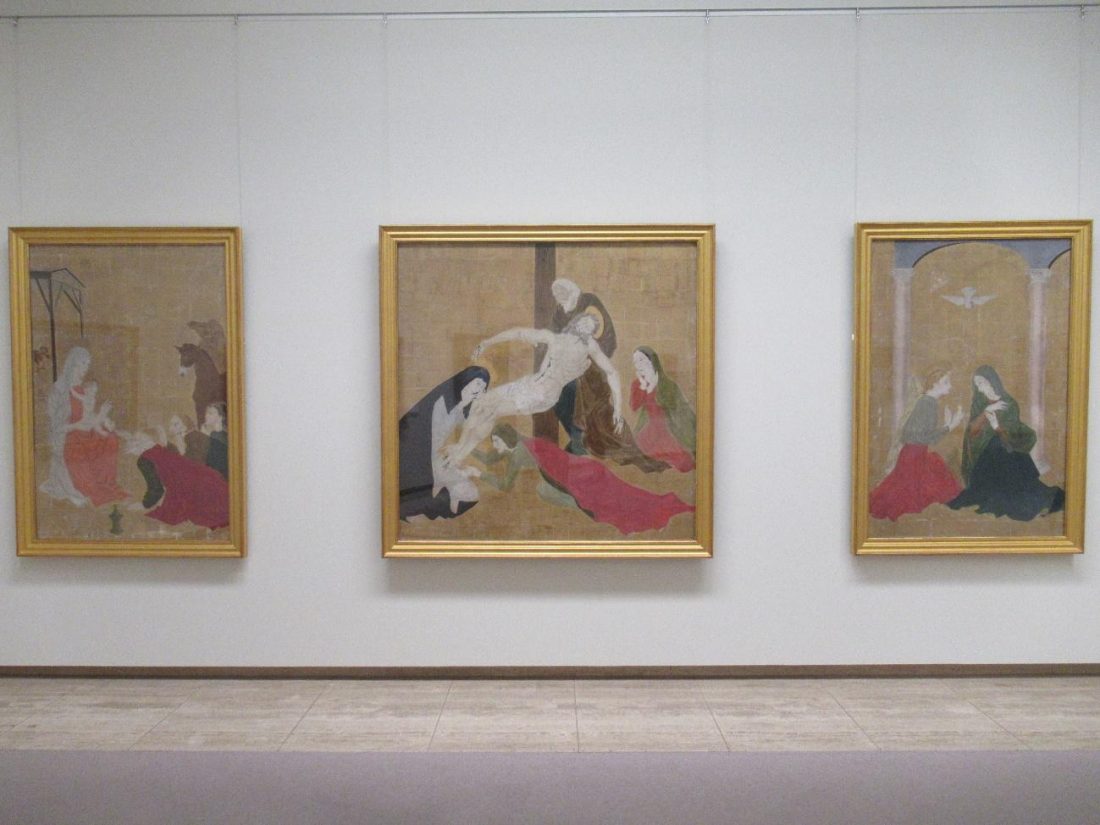
It took me almost the entirety of the museum’s hours of operation to enjoy everything it had to offer, and there would normally be four more galleries open for exploration. That being said, it’s safe to say that a whole day can be dedicated to touring the Hiroshima Museum of Art alone, especially when factoring in a special exhibit. If you decide to pay this museum a visit, I suggest arriving early (the doors open at 9:00 a.m.) and pacing yourself properly to get a good, long look at all the works inside.
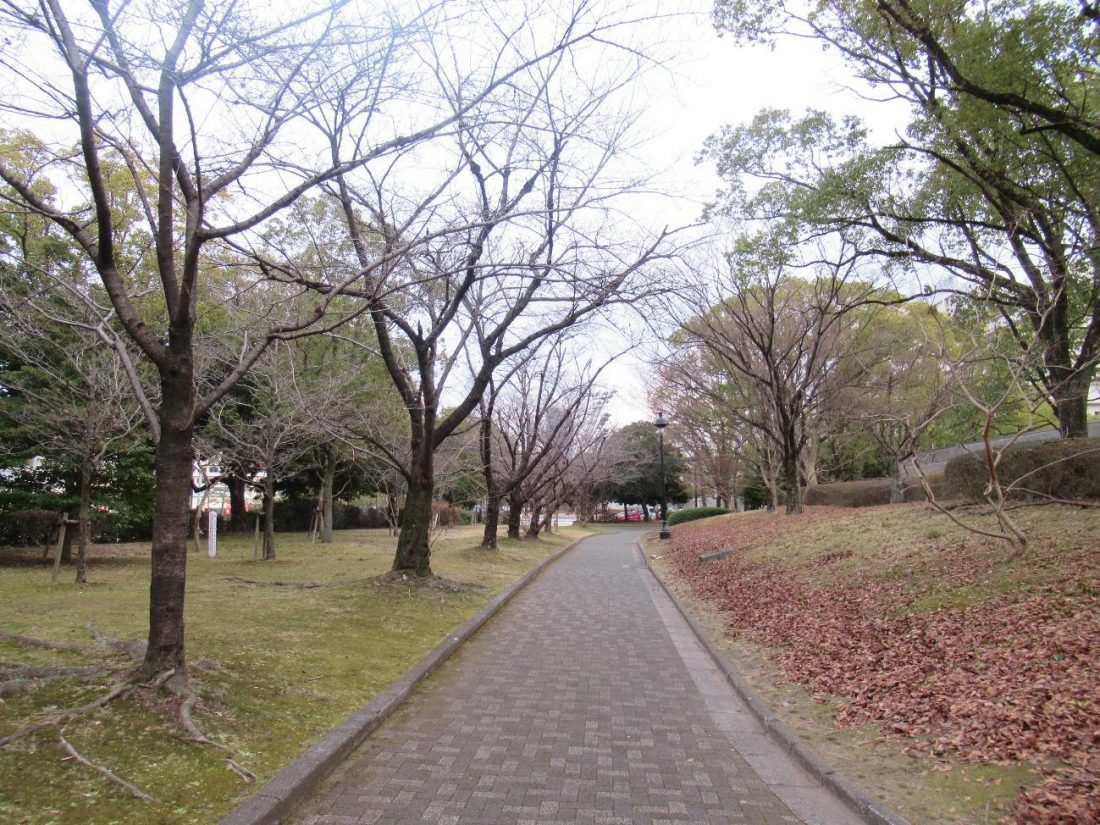
After exiting the building, I walked around to a path behind the museum lined with bare trees and was immediately reminded once again of the art I just saw in the galleries. The above photograph is but one snapshot of a scene that never stays the same. Having walked down this path before, I know that in a few months’ time, these trees will bloom with cherry blossoms in the spring before sprouting green leaves in time for summer, flaring up in various hues of red, orange, and yellow come autumn, and be bare anew once winter rears its head again. This path in each season possesses its own unique beauty and will depict a different landscape each time I return to photograph it. That was my take-home lesson for the day, and I have Impressionism to thank for it.
The fascination doesn’t stop with the museum, as visitors who finish browsing the art galleries can easily return to the bustling center of town to continue their journeys. Even as they delve in the vast entertainment options or indulge in gourmet specialties, the impressions left by the Hiroshima Museum of Art are sure to remain in their minds and possibly have them entertain the idea of a repeat visit to see Hiroshima under a new light. After all, Japan is famous for its four distinct seasons, and no time of year is the wrong time to visit. As different seasons essentially create different places, my hope is that my Home Sweet Hiroshima as a whole leaves an impression deep enough for people to come back time and time again to enjoy it a new way each time, as if enjoying the cycle of nature itself.

